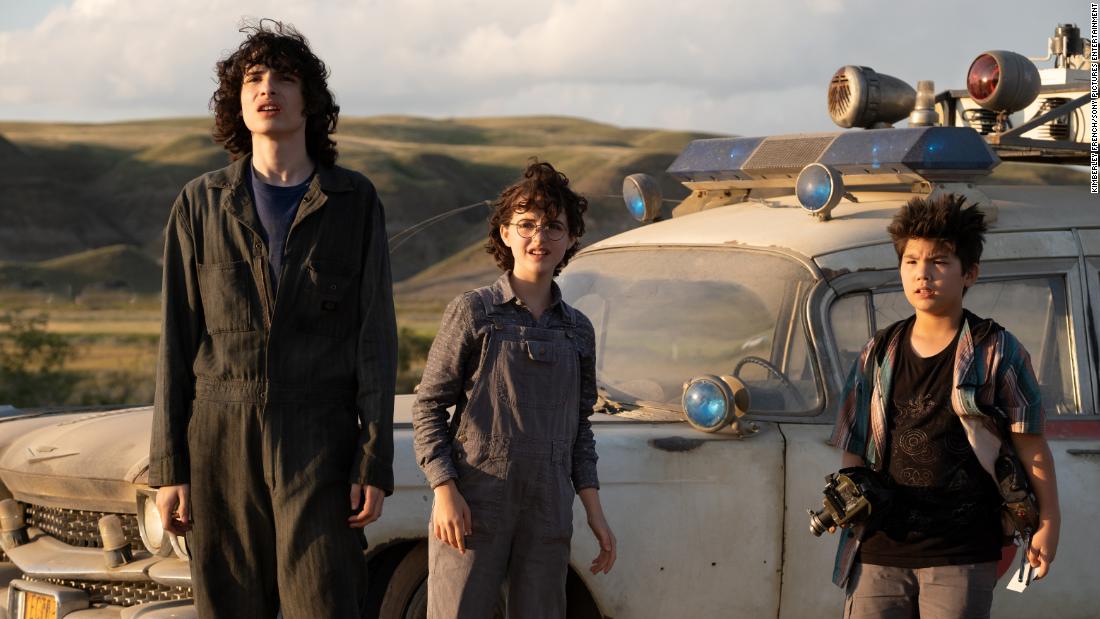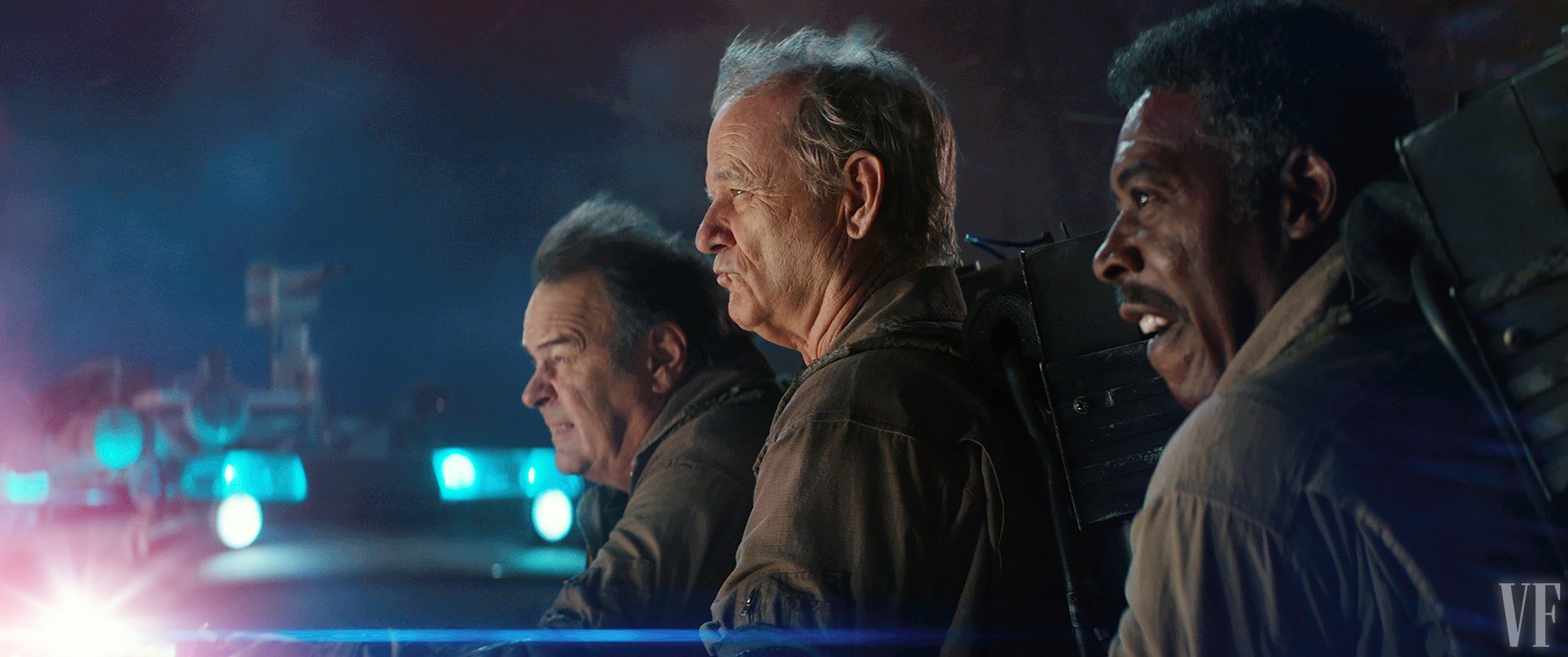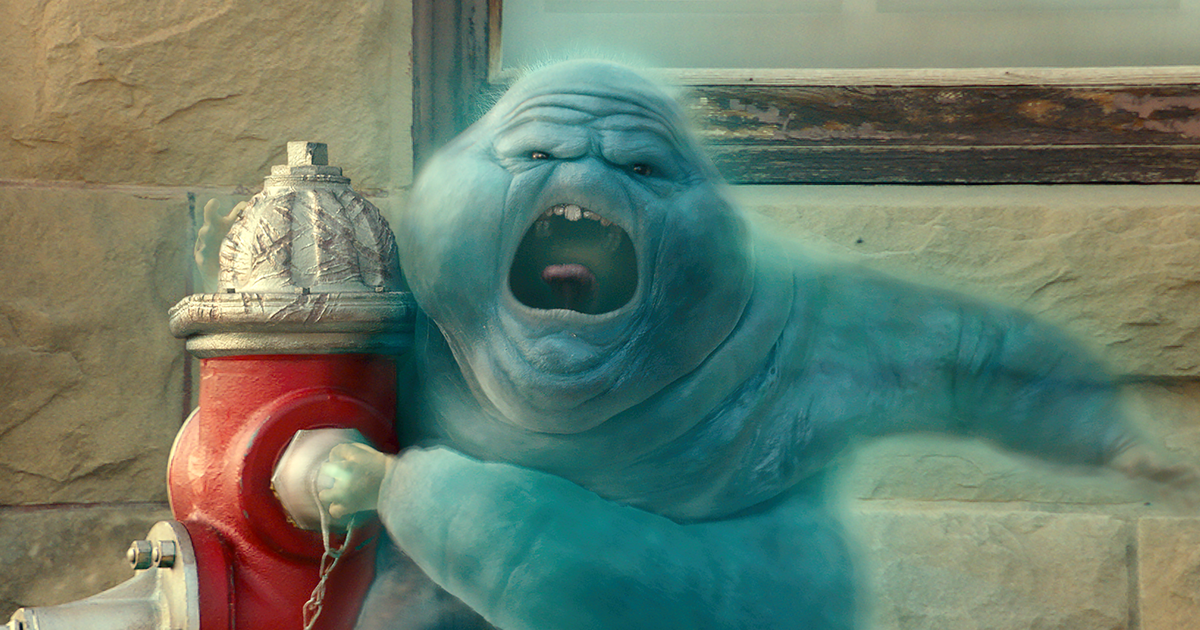By this point we’re all familiar with the ingredients of a good reboot. There will be plenty of fan service, sure. The key, though, might be making one firm tweak to the basic parameters of the franchise to create a sense of freshness – and to reduce our cynicism about the motives for making the movie in the first place.

The three existing Ghostbusters movies have been defined by their placement within an urban landscape – New York City in all three instances, actually. Ghostbusters: Afterlife has nary a skyscraper in sight. The action takes place entirely in rural Oklahoma, the location to which Egon Spengler removed himself when he fell out with his former ghostbusters due to his wild theories about the end of the world, which he could never support with convincing evidence. He lives on what the locals refer to as a “dirt farm.” You can’t get further from an urban landscape than that.
While Jason Reitman‘s film begins with Egon’s death, this creative decision immediately breathes new life into the franchise. Early Steven Spielberg is evoked by this new setting, only it’s ghosts rather than aliens they’re trying to find in this version of the American southwest. The main characters are Egon’s grandchildren, Trevor and Phoebe, who never knew their grandfather because he also fell out with his daughter, their mother, Callie (Carrie Coon). You couldn’t cast two better actors than Finn Wolfhard and Mckenna Grace if you wanted to remind a person of the dearly departed Harold Ramis, who played Egon in the first two movies but died in 2014.
It’s exciting watching these two adjust to the town of Summerville and engage in coming-of-age rites, like riding in the open bed of a pickup truck to “the mountain” after finishing work at the local diner. As the film proceeds, though, the other reboot ingredient – the fan service – starts to overwhelm the location change and the shift to a younger generation of main characters. By the time a keymaster and a gatekeeper are transforming into the horned gargoyles that topped Dana Barrett’s apartment building, and the set is overrun by miniature Stay Puft marshmallow men, Ghostbusters: Afterlife has reminded us it’s really no more enlightened than the other resurrections of beloved intellectual property we’ve been consuming with varying degrees of reluctance.
At least it keeps us on a pretty good high for its first half. Callie and the kids pick through their grandfather’s house and all his paranormal scientific equipment, and the teens use their imposing intelligence to begin to figure out how things work. While Trevor has more of a mechanical mind – he tinkers with the Ectomobile in Egon’s garage until it coughs to life – Phoebe is the real scientist in the family. Even she needs some help to make sense of proton packs and ghost traps, which she gets from an unseen presence in the house – assumed to be Egon – pointing her in the right direction. She also benefits from the knowledge and enthusiasm of a new classmate buddy named Podcast (Logan Kim), so known for his program examining the paranormal.
Turns out they’ll need the equipment. Egon came to Summerville because that’s where Ivo Chandor, who built Dana Barrett’s building as a gateway for Gozer the Destroyer, held his mining operation for the unique building materials. Another paranormal disturbance like the one that occurred in 1984 is presaged by daily earthquakes in Summerville, a phenomenon being examined by Phoebe’s teacher, Gary (Paul Rudd), who moonlights as a seismologist when he’s not playing hilariously inappropriate movies for his summer school class. Before all is said and done, they may need to call in some of Egon’s old friends.
It’s no secret that the old friends are in the movie. Bill Murray, Dan Aykroyd and Ernie Hudson are all waiting for much of the time to make their big appearance. While it’s good that they didn’t poison the well with their presence any earlier, they are probably the single element that most pushes this movie over the top in terms of its fan pandering. At just the crucial moment when we should be appreciating the climax of our new characters’ journey, some geriatric ghostbusters show up on the scene. The movie has been good enough to this point to make us forget we thought we needed them.
It’s not the only example of the film overplaying the nostalgia card. For all it starts out differently, it ends up in a place that’s weirdly slavish in its devotion to the exact dynamics of the ending of the original film. “History repeats itself” is a time-worn adage, but it’s rarely as literal as you see here.
Ghostbusters: Afterlife does create enough good will for you to prefer focusing on what it gets right. One of those is its stellar cast. In addition to the teenage leads, who include Trevor’s love interest Lucky (Celeste O’Connor), the film makes all the right choices with its new adult cast. Not only do you have Rudd doing a likeable variation on his usual shtick – the movie could have used more of him, actually – but there’s a nice shout out to the Chicago origins of most of the original cast in the form of Chicago theatre royalty Coon and her real-life partner, playwright Tracy Letts, who appears in a cameo. Those two are so respected, they lend instant credibility to the movie.
One of the justifications for making this movie, of course, is an update of the special effects, which are the part of the original that has aged the least well. Not only do you get a modern-day CGI variation on Slimer from the original – called Muncher for his tendency to chomp metal – but those gargoyle dogs move through their environment a lot more seamlessly in 2021.
Of course, the digital effects also play a role in the other reason Aykroyd, Murray and Hudson wanted to be part of this movie, which was to send off their friend and colleague Ramis. The Egon Spengler character always felt like a bit of a third wheel next to the bigger stars Aykroyd and Murray, but because the actor playing him died, it has placed him front and centre as the unexpected soul of the franchise. Ramis dying allowed this movie to focus on two generations of Egon’s offspring, who are easily the movie’s biggest win, and characters we could watch in any number of future sequels. The story touchingly allows them all to bid farewell to Ramis, which takes the perfunctory nostalgia and transforms it into genuine sentiment.
Ghostbusters: Afterlife is currently playing in cinemas.



